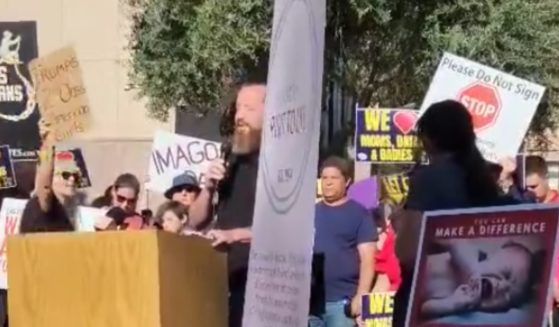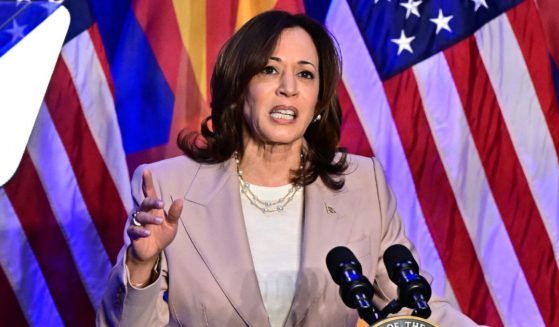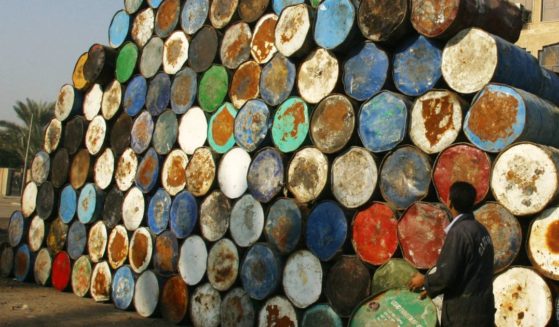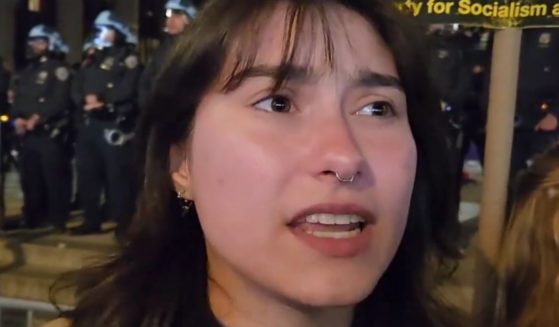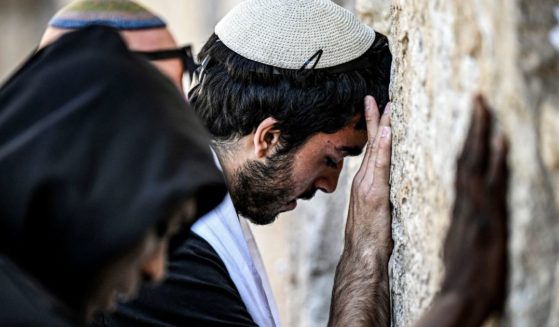President of Iran Responds to Biden's 'Free Iran' Vow on Anniversary of 1979 Takeover of US Embassy
President Joe Biden, in California late Thursday at a rally before the U.S. midterm elections, stopped his speech to address a crowd that held up cellphones displaying the message “FREE IRAN.”
“Don’t worry, we’re gonna free Iran,” Biden said in an aside during a campaign rally for Democratic U.S. Rep. Mike Levin.
Biden added, “They’re gonna free themselves pretty soon.”
Iran on Friday marked the 1979 takeover of the U.S. Embassy in Tehran as its theocracy faces nationwide protests after the September death of a 22-year-old woman who had been arrested by the country’s morality police for not properly covering her hair with the mandatory Islamic headscarf, known as the hijab.
In his speech Friday, Iran’s hard-line president, Ebrahim Raisi, referenced Biden’s comments.
“Maybe he said this because of a lack of concentration. … He said we aim to liberate Iran,” Raisi said. “Mr. President! Iran was liberated 43 years ago, and it’s determined not to become your captive again. We will never become a milking cow.”
Iranian state-run television aired live feeds of various commemorations throughout the country, with some in Tehran waving placards of the triangle-shaped Iranian drones Russia now uses to strike targets in its war against Ukraine.
But while crowds in Tehran looked large with chador-wearing women waving the Islamic Republic’s flag, other commemorations in the country appeared smaller, with only a few dozen people taking part.
Raisi, speaking to people gathered in front of the former U.S. Embassy building, criticized those protesting the theocracy.
“Anyone taking the smallest step in the direction of breaching security and riots must know that they are stepping in the direction of enemies of the Islamic Revolution,” he said. “Americans think they can execute the plan they carried out in some countries like Syria and Libya here. What a false dream!”
Those at the commemoration also waved effigies of French President Emmanuel Macron and Saudi Crown Prince Mohammed bin Salman. Signs and chants from the crowd called out: “Death to America! Death to Israel!”
The demonstrations that have convulsed Iran for seven weeks since the death of 22-year-old Mahsa Amini mark one of the biggest challenges to the country’s clerical rulers since they seized power in the 1979 Islamic Revolution.
At least 300 protesters have been killed and 14,000 arrested since the unrest began, according to Human Rights Activists in Iran, a group that has monitored the crackdown on demonstrators.
Iran’s government has not offered an overall death toll, with one state newspaper making the counterfactual claim that no one had been killed by security forces over the 49 days of protests.
Later on Friday, protests began in Iran’s southeastern Sistan and Baluchestan province, which has seen weeks of unrest.
Online videos purported to show people marching in the streets and some throwing stones, with the crackle of gunfire in the background and clouds of tear gas rising. Some protesters appeared bloodied, while activists said some had been killed. No casualty figures were immediately known.
Iran’s state-run IRNA news agency later reported that protesters set fire to a police stand in Khash, a city in Sistan and Baluchestan, and attacked the local governor’s office.
On Thursday, a Shiite cleric reportedly was shot and killed in Sistan and Baluchestan, a long restive province that’s predominantly Sunni.
Hard-liners within Iran long have bussed government workers and others into such Nov. 4 demonstrations, which have a carnival-like feel for the students and others taking part on Taleghani Street in downtown Tehran.
This year, however, it remained clear that Iran’s theocracy hopes to energize its hard-line base. Some signs read “We Are Obedient To The Leader,” referring to 83-year-old Supreme Leader Ayatollah Ali Khamenei, who has final say over all matters of state in the country. The weeks-long demonstrations have included cries calling for Khamenei’s death and the overthrow of the government.
The annual commemoration marks when student demonstrators climbed over the fence at the U.S. embassy on Nov. 4, 1979, angered by then-President Jimmy Carter allowing the fatally ill Shah Mohammad Reza Pahlavi to receive cancer treatment in the United States.
The students soon took over the entire compound. A few staffers fled and hid in the home of the Canadian ambassador to Iran before escaping the country with the help of the CIA, a story dramatized in the 2012 film “Argo.”
The 444-day crisis transfixed America, as nightly images of blindfolded hostages played on television sets across the nation. Iran finally let all of the captives go the day Carter left office on Ronald Reagan’s inauguration day in 1981.
The Western Journal has reviewed this Associated Press story and may have altered it prior to publication to ensure that it meets our editorial standards.
Truth and Accuracy
We are committed to truth and accuracy in all of our journalism. Read our editorial standards.



